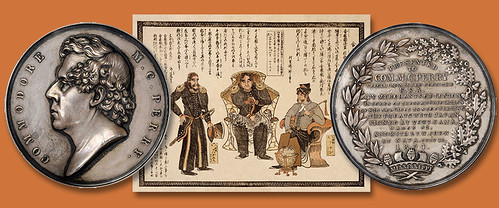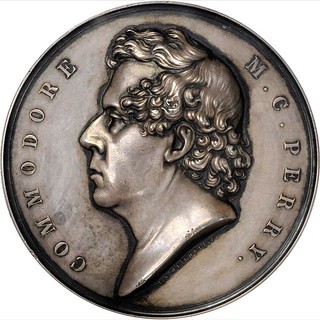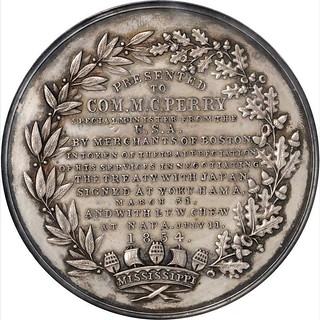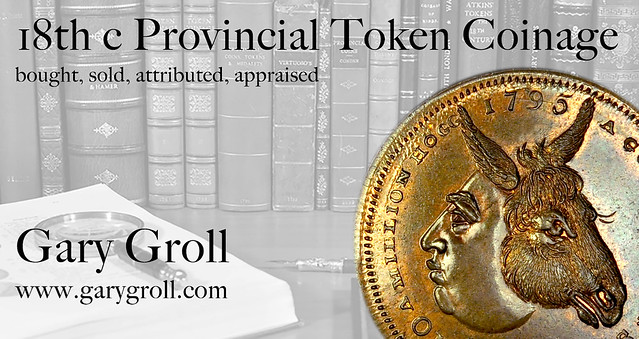
PREV ARTICLE
NEXT ARTICLE
FULL ISSUE
PREV FULL ISSUE
1854 COMMODORE PERRY SILVER JAPAN TREATY MEDALIn a blog article published on the Stack's Bowers website, Senior Numismatist and Cataloger Jeremy Bostwick writes about a rare silver medal -Editor

The rapid industrialization of the western world in the 19th century led to an ongoing need to open new markets, with the Far East providing a prime opportunity for both selling and buying. To this end, the United States under President Millard Fillmore sent Commodore Matthew Perry of the U.S. Navy to Japan in 1853. In July of that year, he arrived in Tokyo harbor with the intent of engaging in "battleship diplomacy," a type of negotiation which actually involved no real negotiating but instead entailed an ultimatum through threats of hostile aggression. Japan at the time was ruled by the Tokugawa shogun (great general), as the Tokugawa family had seized power by defeating other feudal families around the empire two centuries prior. Though still technically governed by the emperor, Japan was under the de facto control of the shogun. This decentralized power structure relied heavily upon a lack of outside influence, meaning that the arrival of western powers could spell the end for the shogunate. Given Japan's lack of maritime might, one of the only lines of defense was a stealth operation involving ninjas—one of their last military missions—whereby the ninja Sawamura Yasusuke secretly boarded Perry's ship with the intention of gathering intelligence. Though documents were indeed gathered, the language barrier prevented any strategic value. What's more, what was gathered presented little more than the crew's exploits during their voyage. With no other means to rebuff their western visitors, the shogun finally acquiesced, seeing that change was inevitable and signing a trade treaty with the United States in 1854. This "opening up" of Japan would eventually cause the dissolution of the shogunate and the emergence of the Meiji imperial period little over a decade later. In honor of Commodore Perry's successful mission, the United States struck a commemorative medal conveying the accomplishments. While one was struck in gold and presented to Perry himself, another 20 were issued in silver—several of which were awarded to some of Perry's higher ranking officers. One of these incredibly rare and difficult silver strikings is featured in our October Hong Kong auction (lot 40370), and represents a great link to a very historic period in the relations of the two countries as well as a close to the feudal period of Japan.
Here's a larger view of the medal. It's a wordy but impressive and important piece. -Editor


To read the complete article, see:
To read the complete lot description, see:

Wayne Homren, Editor The Numismatic Bibliomania Society is a non-profit organization promoting numismatic literature. See our web site at coinbooks.org. To submit items for publication in The E-Sylum, write to the Editor at this address: whomren@gmail.com To subscribe go to: https://my.binhost.com/lists/listinfo/esylum All Rights Reserved. NBS Home Page Contact the NBS webmaster 
|